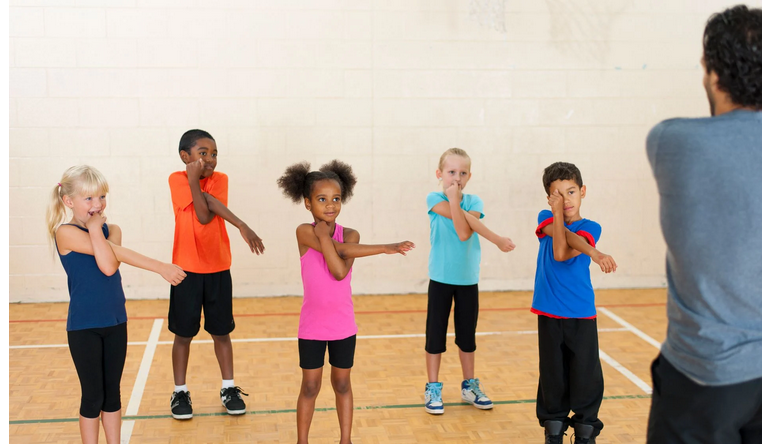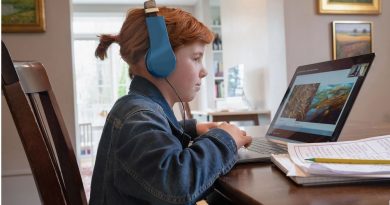Building a Whole Child Wellness Team
Strategies for combining physical, nutritional, and mental health goals in the early grades to improve student engagement and productivity.
When it comes to grades, behavior, attendance, concentration, and memory, the nutrition and fitness levels of students are inextricably linked to positive academic outcomes. Mental health supports are also important, yet schools tend to compartmentalize health and physical education from mental health supports and social and emotional learning (SEL).
Some states are starting to recognize the connection and are realigning standards for school health. For example, the Texas Essential Knowledge and Skills (TEKS) will expand in 2022 to include a number of new standards related to mental health and SEL.
While it’s never too late to implement a coordinated approach to whole-child health, schools that offer this approach in early childhood set students off on the best possible start for a lifetime of physical and mental health. Preschool students can begin to understand how healthy choices, such as eating fruits and vegetables, can impact their emotions and mood.
Here are three ways that educators can un-silo the work of their wellness and SEL teams for a whole-school and whole-child approach that improves efficacy and efficiency.
1. Create a Whole-Child Wellness Team
Whole-child wellness is a team effort. The most effective way to bridge the work of those promoting nutrition and physical activity with those advancing social and emotional learning is to form a single committee that meets regularly to align with and support each other’s work.
An ideal team is co-led by wellness champions—often the school’s SEL and physical education team leads—and consists of a group of people in varied roles at the school. Typical team members include school counselors, physical education and health teachers, the director of nutrition services, a principal or assistant principal, and at least one classroom teacher who is passionate about whole-child education. You can also include parent and/or student representatives. Of course, you might not get all these individuals on board right away. It’s fine to start small and build over time.
“I took the reins on an initiative I knew would be a challenge,” says Valerie Gonzalez, a physical education teacher and wellness champion at Cayetano Cavazos Elementary in Edinburg, Texas. “I initially began planning strategies for schoolwide wellness with just my school principal. Once we got going and started seeing positive results, it became much easier to get buy-in and build our team.”
Once you have a team assembled, make a plan to meet regularly—at least once per grading period. Use these meetings to discuss SEL priorities and health goals. Brainstorm ways to align the two, and make a plan to communicate the focus areas to everyone in the school community. Here are a few tips:
- Encourage adults to model desired behaviors such as drinking water throughout the day.
- Establish a schoolwide common language for SEL and health/wellness; for example, “Stop-Breathe-Go” can be helpful for managing stress and handling conflict.
- Engage teachers and students in simple but specific tasks that reinforce positive behaviors such as taking a movement break during school-day transitions.
- Communicate with families and the broader community, and invite them to get involved in promoting and reinforcing behaviors that support physical and mental health.
- Celebrate success along the way.
Once you have some momentum, make sure to keep it going and build upon early successes. Document your work and start each school year with a reconvening that reflects on past success and sets new goals for the year ahead.
2. Link Physical and Mental Health
We know from research that the most effective SEL programs are those that are sequenced, active, focused, and explicit. The same is true for effective health and nutrition education. When we provide a common language and active ways to practice desired behaviors, outcomes improve significantly.
One program designed to provide schools with a road map for coordinating physical and mental health initiatives is CATCH (Coordinated Approach to Child Health), where I oversee program and product development. We use a common language related to a Mind-Heart-Body framework that helps adults and students think holistically about the interconnectedness of physical and mental health.
By providing anchor activities that prompt everyone to frequently reflect on their mind, heart, and body in a way that develops self-awareness, self-management, communication skills, empathy, and healthy decision-making, schools are able to connect core academics with SEL, physical education, and health.
For preschool, this might be associating healthy foods with positive emojis. At the elementary level, it might be a check-in where students think about their energy level (high, medium, low) and how food choices and physical activity affect it. Starting in middle school, students can benefit from explicit lessons on mental health and how nutrition and physical activity can impact brain development and overall well-being.
Beyond a common language, an environment that supports whole-child wellness should be something that everyone in the school can see, hear, understand, and participate in. Adult role modeling is essential. For example, a teacher who chooses to take the stairs instead of the elevator can talk to students about why they’re making that choice. In addition to describing the health benefits of the stairs, they can also discuss how it takes self-discipline to make that choice.
Later, when they’re encouraging students to perform a difficult activity (academic, physical, social, or otherwise), they can refer back to their own choice about the stairs as an example of an option that isn’t easy but always makes them feel better about themselves in the long run.
3. Integrate SEL With Physical Activities and Health Education
Active SEL strategies help students not just talk about social and emotional learning topics but also physically embody ideas and skills. Embodied learning puts thoughts and ideas into our muscle memory, like riding a bicycle. This is one of the reasons that research supports yoga activities as an effective way of developing self-awareness, focus, and mindfulness.
Physical activity can be an excellent anchor for your SEL initiative, as it helps students develop their physical and mental health simultaneously. SEL is at the core of standards 4 and 5 of SHAPE America’s national standards for health and physical education. These standards center on helping students develop the skills and mindsets to build strong and meaningful relationships while increasing confidence and self-efficacy.
The key is to help students see the connection between physical/health education activities and their overall happiness and success in school. We can best accomplish this by reinforcing and supporting the values of whole-child wellness in every aspect of the school day. As Valerie Gonzalez says, “It takes an entire team of educators, administrators, counselors, librarians, even custodians, to build a school culture that is authentically focused on the whole child.”
Source: https://www.edutopia.org/article/building-whole-child-wellness-team




